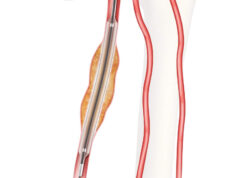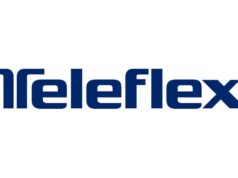 The US Food and Drug Administration (FDA) has given premarket approval (PMA) for the MANTA vascular closure device from Teleflex. This device is the first commercially available biomechanical vascular closure device designed specifically for large bore femoral arterial access site closure.
The US Food and Drug Administration (FDA) has given premarket approval (PMA) for the MANTA vascular closure device from Teleflex. This device is the first commercially available biomechanical vascular closure device designed specifically for large bore femoral arterial access site closure.
The device is indicated for closure of femoral arterial access sites while reducing time to haemostasis following the use of 10–20F devices or sheaths (12–25F OD) in endovascular catheterisation procedures.
The SAFE MANTA IDE clinical trial, the largest US prospective multi-centre, single-arm trial of a purpose-designed large bore femoral access site closure, demonstrated that the MANTA device successfully achieves fast reliable biomechanical closure with rapid haemostasis, with all primary and secondary endpoints met. With its innovative design, the MANTA device has the potential to reduce bleeding complications and offset other procedural costs.
“I am very encouraged by the results of the SAFE MANTA IDE clinical trial. The clinically proven major complication rate (as defined by the study protocol) of 5.3% and VARC-2 major vascular complications rate of 4.2% compare very favourably to suture mediated devices, and the 24 second median time (65 second mean time) from deployment to haemostasis was impressive,” says Zvonomir Krajcer, lead enroller and co-principal investigator of the SAFE MANTA IDE clinical trial and co-director of the Peripheral Vascular Disease Service at the Texas Heart Institute in Houston, USA. “We have been patiently waiting for this approval, are eager to use the MANTA device commercially, and look forward to the efficiencies it can provide.”
According to a company press release, with this device, clinicians and hospitals can achieve successful large bore closure with a device that does not require pre-closure, low complication rates for biomechanical closure with rapid haemostasis, and reproducible results.













